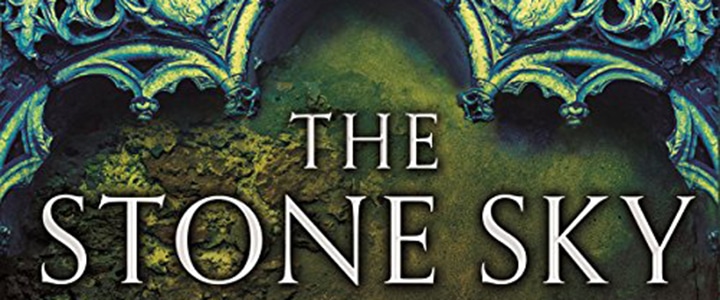The apocalypse is here. Again.
In The Broken Earth series by N.K. Jemisin, what we’d consider the end of the world – toxic gases wiping out entire provinces, catastrophic earthquakes that destroy dozens of towns, drowning tidal waves – are just another season (albeit one that only happens every few decades or centuries).
In the first book in the series, The Fifth Season, we learned about the transformed Earth, which lost its moon, and saw its landmass consolidate around a single supercontinent . Known as the Stillness, it’s the last refuge of humanity, and it’s anything but still as earthquakes are a frequent concern.
Humanity is organized in to comms, which are ruled by a continent spanning empire known as the Sanzed Equatorial Affiliation. Among the many groups of humans are mutants known as Orogenes, who are able to control energy (seismic and temperature). Orogenes are (of course) feared and hated by other humans, and are controlled by the Fulcrum, an imperial agency which finds, trains, and uses orogenes to provide stability to the land.
Except, in the prologue of the first book, a particularly powerful Orogene named Alabaster decides he’s had enough. He creates a rift that destroys the empire’s capital city and plunges the world into its final season.
It causes a true apocalypse that makes all the hellish seasons that came before seem like particularly nasty (but survivable) interludes.
As The Stone Sky opens, the main characters from the first two books are in equally dire situations, separated from one another and desperate to either save the world or destroy it.
World Building (and Breaking)
I read The Fifth Season back in April 2019, and I’ve got to say, it was a tough read. N.K. Jemisin spins an excellent tale of three women – Essun, Damaya, and Syenite – at different points in the recent history of the Stillness. One of these characters – Essun – is written from the second-person point of view and in present-tense, which I freely admit I had a hard time getting my head around. It’s not a point of view I’ve read a lot of, and prose written in the present tense also tends to be pretty rare.
I took a few runs at the book as the Summer of 2019 progressed, but didn’t finish it until the following winter. What got me over the hump was switching to the audiobook, which I listened to while walking to my job or working out at the gym.
It’s not that it was in any way a bad book – it’s a great book – but my brain struggled with it. Reading the book was worth it, though, because the three characters come together in an unexpected (though in retrospect, totally understandable) way.
The first book’s unconventional structure and triple perspectives settles down into a more typical narrative in the second book, which sees the main characters continuing to deal with the fallout from the city-destroying volcanic rift in Book One, which sends tremendous volumes of ash into the air to blot out the sun, choke animal life, and smother planets.
Essun, whom we learned had two children, a young son murdered by his father when the man discovered the boy was an Orogene, and a daughter, whom the father kidnapped in the wake of the murder. Essun is desperate to find her daughter, but finds herself sidetracked from her quest by the need to survive.
By the end of Book 2, we’d learned much about the Broken Earth …
SPOILER
.
.
.
.
… and why this version of our planet has no Moon.
And that Essun and her friends just might be able to return the Moon to Earth skies, and end the broken cycle of Fifth Seasons.
Yeah, it’s a hell of a setup for Book 3.
It’s a good tale. Essun’s looking to save the Earth by recapturing the Moon as it does a flyby of its parent. Meanwhile, her daughter sees the only way to end the suffering of the Orogenes is to kill everyone on the planet. Meanwhile, a third faction – the Stone-Eaters (magically transformed humans from before the start of the 5th Seasons) has their own agendas that may or may not end the world.
The Stone Sky – and the Broken Earth series in general – is an excellent science fantasy series that does a great job of playing with the implications of planet-wrecking psionic powers.
Featured Image Meta
Cover art for The Stone Sky. Credit: Hachette Book Group

